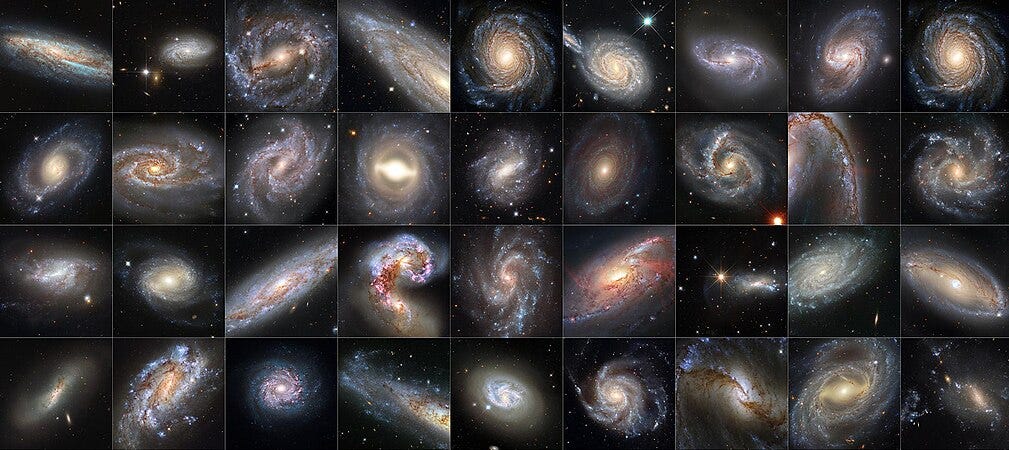From the spiraling arms of galaxies to the symmetrical faces that populate our cities, patterns pervade reality. These aren’t superficial coincidences—they are recurrences, forms that seem to emerge again and again, across time, space, and even history.
In Patterns in Creation, I explored how fractals, cymatics, and morphogenesis hint at an underlying signature of the universe. In The European Variant Matrix, I extended this idea to human history, arguing that recurring archetypes of people—“variants”—appear generation after generation, as if drawn from a limited set of human templates.
But this raises a deeper question: why do these patterns exist at all? Why does nature “prefer” spirals, waves, and symmetry? Why does history seem to re-stage the same cast of characters?
Below, I outline six major theories—ranging from strict mathematical determinism to metaphysical speculation—that attempt to explain why reality repeats itself.
1. Mathematical Inevitability – The “Optimal Efficiency” Hypothesis
The first and most conservative explanation is that patterns are simply the inevitable consequence of mathematics and physics. The universe runs on rules, and only certain configurations are energetically and structurally stable.
Why it happens: Matter and energy tend to minimize entropy and resistance. Certain patterns—branching fractals, logarithmic spirals, and hexagonal tiling—are optimal for distributing energy or packing space.
Examples:
River deltas, tree branches, and human lungs all share fractal branching because it’s the most efficient way to transport fluids and gases.
Honeycombs form hexagonal grids because hexagons pack space with minimal energy expenditure.
Galaxies often follow logarithmic spirals for the same reason water spirals into a drain—it’s a solution to rotational dynamics.
Under this view, patterns are not chosen; they are inevitable. If you run the same laws of physics a trillion times, you’ll get the same forms every time.
2. Vibrational Resonance – The “Wave Organizing Field” Hypothesis
A more dynamic theory proposes that waves and vibrations organize matter into recurring forms. At its core, the universe is vibrational, and form follows frequency.
Why it happens:
Waves naturally form standing nodes of stability, where energy collects and matter tends to accumulate.
Harmonic resonance amplifies specific frequencies while suppressing others, forcing matter into discrete, repeating patterns.
Examples:
Cymatics: Sprinkle sand on a vibrating plate, and the grains arrange themselves into geometric mandalas. Change the frequency, and the shape changes.
Quantum field theory: Every particle is an excitation of an underlying field—a ripple frozen into stable form.
Galaxies and shells: Both follow harmonic ratios because spiraling flows naturally settle into resonance patterns.
If this theory is true, the universe is literally a song—a dynamic interplay of frequencies shaping reality. Ancient traditions like the Vedic concept of Nada Brahma (“the world is sound”) may have been early intuitions of this vibrational truth.
Keep reading with a 7-day free trial
Subscribe to HHeuristics to keep reading this post and get 7 days of free access to the full post archives.


